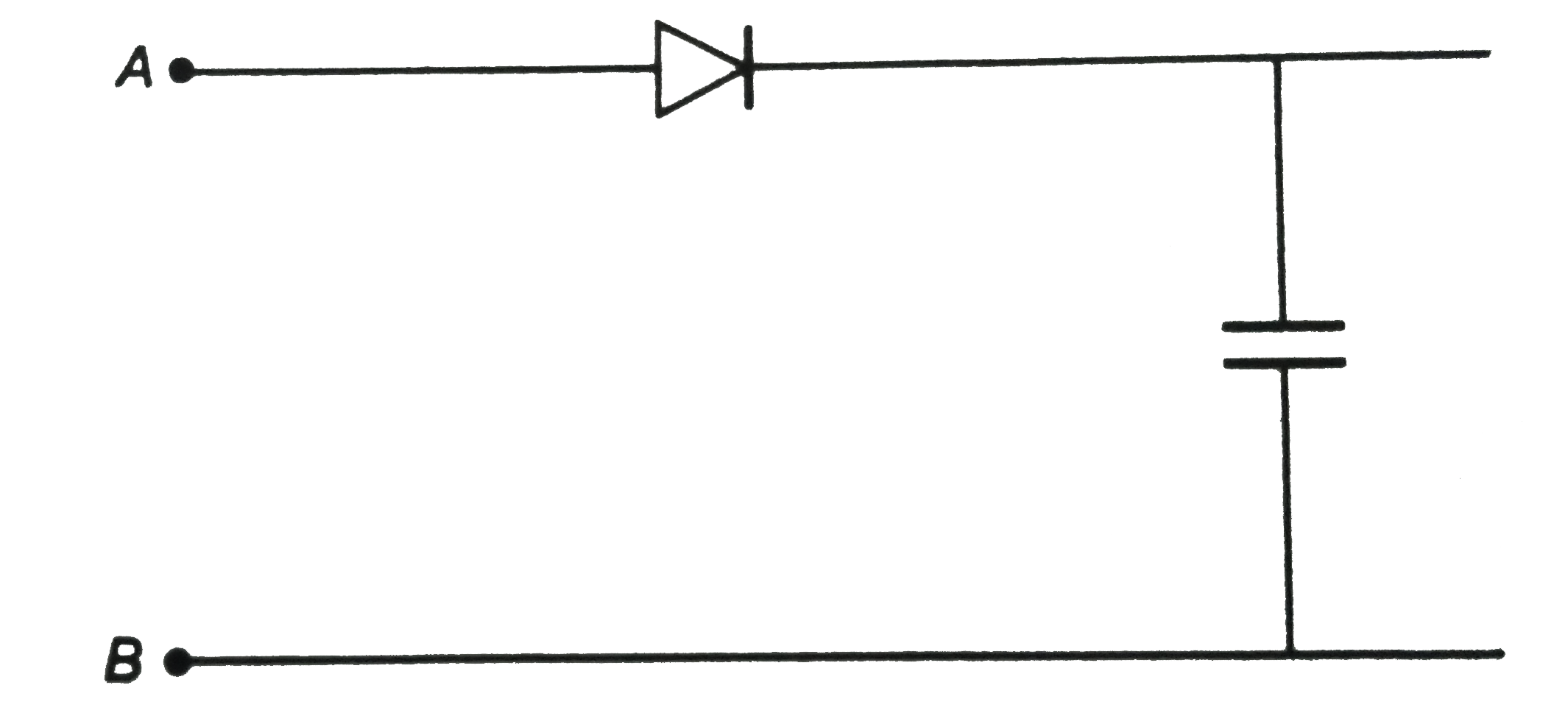A capacitor charged to 50V is discharged by connecting the two plates at t=0.If the potential difference across the plates drops to 1.0 V at t=10 ms,what will be the potential difference at t=20 ms?
To solve the problem step by step, we will use the formula for the discharging of a capacitor in an RC circuit:
Step 1: Understand the formula for discharging a capacitor
The voltage across a discharging capacitor at time t is given by:
V(t)=V0e−tRC
where:
- V(t) is the voltage at time t,
- V0 is the initial voltage (50 V in this case),
- R is the resistance,
- C is the capacitance,
- t is the time in seconds.
Step 2: Set up the equation at t=10 ms
At t=10 ms, the voltage V(10 ms)=1 V. We can write:
1=50e−10×10−3RC
Dividing both sides by 50 gives:
150=e−10×10−3RC
Taking the natural logarithm of both sides:
ln(150)=−10×10−3RC
This can be rearranged to find RC:
RC=−10×10−3ln(150)
Step 3: Set up the equation at t=20 ms
Now, we want to find the voltage at t=20 ms:
V(20 ms)=50e−20×10−3RC
We can express this in terms of V(10 ms):
V(20 ms)=50e−20×10−3RC=50(e−10×10−3RC)2
From our earlier equation, we know:
e−10×10−3RC=150
Thus:
V(20 ms)=50(150)2
Calculating this gives:
V(20 ms)=50⋅12500=502500=0.02 V=0.2 V
Final Answer
The potential difference at t=20 ms is 0.2 V.
---
The voltage across a discharging capacitor at time t is given by:
V(t)=V0e−tRC
where:
- V(t) is the voltage at time t,
- V0 is the initial voltage (50 V in this case),
- R is the resistance,
- C is the capacitance,
- t is the time in seconds.
At t=10 ms, the voltage V(10 ms)=1 V. We can write:
1=50e−10×10−3RC
Dividing both sides by 50 gives:
150=e−10×10−3RC
Taking the natural logarithm of both sides:
ln(150)=−10×10−3RC
This can be rearranged to find RC:
RC=−10×10−3ln(150)
Now, we want to find the voltage at t=20 ms:
V(20 ms)=50e−20×10−3RC
We can express this in terms of V(10 ms):
V(20 ms)=50e−20×10−3RC=50(e−10×10−3RC)2
From our earlier equation, we know:
e−10×10−3RC=150
Thus:
V(20 ms)=50(150)2
Calculating this gives:
V(20 ms)=50⋅12500=502500=0.02 V=0.2 V
The potential difference at t=20 ms is 0.2 V.
Topper's Solved these Questions
- ELECTRIC CURRENT IN CONDUCTORSBOOK - HC VERMA ENGLISHCHAPTER - ELECTRIC CURRENT IN CONDUCTORSEXERCISE - Objective 1
15 Videos
- ELECTRIC CURRENT IN CONDUCTORSBOOK - HC VERMA ENGLISHCHAPTER - ELECTRIC CURRENT IN CONDUCTORSEXERCISE - objective 2
9 Videos
- ELECTRIC CURRENT IN CONDUCTORSBOOK - HC VERMA ENGLISHCHAPTER - ELECTRIC CURRENT IN CONDUCTORSEXERCISE - questions for short answer
17 Videos
- DISPERSION AND SPECTRABOOK - HC VERMA ENGLISHCHAPTER - DISPERSION AND SPECTRAEXERCISE - Question for short Answer
6 Videos
- ELECTRIC CURRENT THROUGH GASESBOOK - HC VERMA ENGLISHCHAPTER - ELECTRIC CURRENT THROUGH GASESEXERCISE - Short answer
6 Videos
Similar Questions
A 220 V AC supply is connected between points A and B . What will be the potential difference V across the capacitor ?

View SolutionA 220 V AC supply is connected between points A and B . What will be the potential difference V across the capacitor ?

View SolutionA 220 V AC supply is connected between points A and B . What will be the potential difference V across the capacitor ?

View SolutionThe plates of a parallel plate capacitor are charged to a potential difference of 117 V and then connected across a resistor. The potential difference across the capacitor decreases exponentially with to time.After 1s the potential difference between the plates is 39 V, then after 2s from the start, the potential difference (in V) between the plates is
View SolutionA capacitor is charged steadily from a DC source. Correct variation of potential difference across the plates of capacitor with charge on the plates of capacitor is
View SolutionA capacitor is charged to a potential difference of 100 V and is then connected across a resistor. The potential difference across the capacitor decays exponentially with respect to time. After 1 sec, the P.D. between the plates of the capacitor is 80 V. what will be the potential difference between the plates after 2 sec ?
View SolutionIn a parallel plate capacitor, the distance between the plates is d and potential difference across the plate is V. Energy stored per unit volume between the plates of capacitor is
View SolutionA 220 V A supply is connected between points A and B in figure. What will be the potential difference V across the capacitor?
View SolutionA capacitor is connected to a 12 V battery through a resistance of (10Ω).It is found that the potential difference across the capacitor rises to 4.0 V in 1(mu)s. find the capacitance of the capacitor.
View SolutionA capacitor of capacitance C is charged to a potential difference V from a cell and then disconncted from it. A charge +Q is now given to its positive plate. The potential difference across the capacitor is now
View Solution
